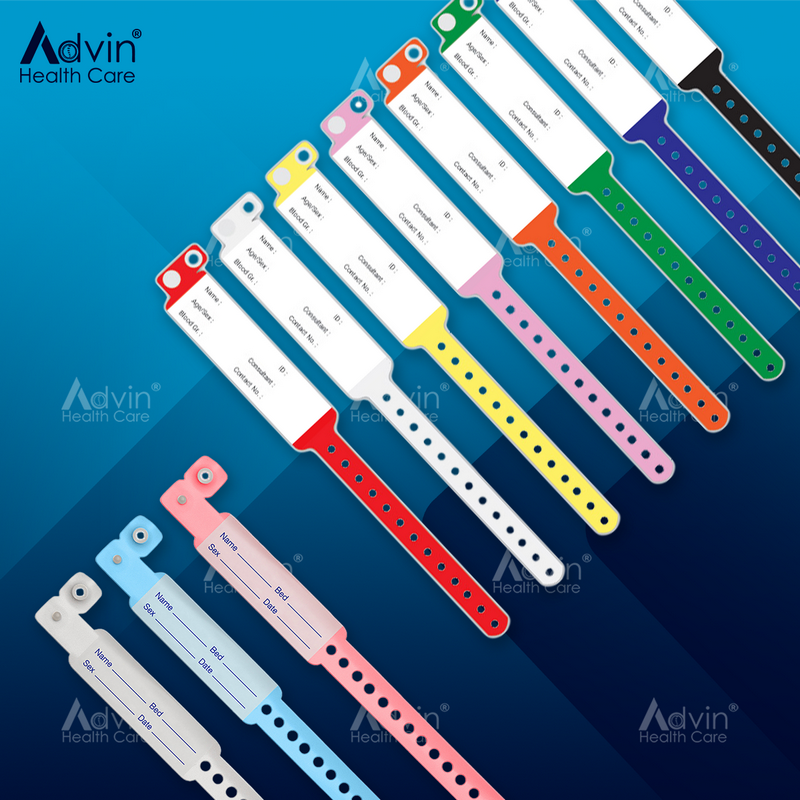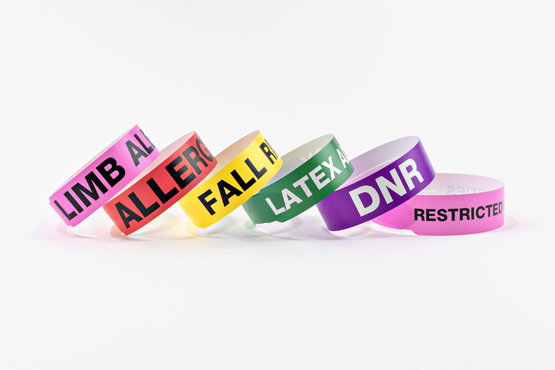How to Ensure the Protection and Accuracy of Patient Information with a Patient Identification Band
How to Ensure the Protection and Accuracy of Patient Information with a Patient Identification Band
Blog Article
The Necessary Uses of Patient Identification Band for Making Certain Patient Security
In the world of health care, Patient safety is a critical worry. One vital tool in achieving this is the Patient Identification band, a seemingly straightforward yet exceptionally significant tool. It works as a secure against misidentification mistakes, promoting effective interaction among service providers, and enhancing the top quality of care. Its role in procedures and pediatric care is especially crucial. The conversation does not stop right here, as the advancing technical improvements in these bands provide even more to explore.
Comprehending the Fundamentals of Patient Identification Bands

The Role of Patient Identification Bands at fault Reduction
Given the vital value of precise Patient Identification in healthcare, the use of Patient Identification bands has confirmed to be highly effective in decreasing errors. These bands, usually furnished with barcodes or RFID chips, give immediate access to a person's clinical background, allergies, and current therapies. In essence, Patient Identification bands offer as a vital tool in error decrease, boosting Patient safety, and advertising top quality care in healthcare setups.

Enhancing Precision of Medical Diagnosis and Therapy With Identification Bands
The usage of Patient Identification bands dramatically enhances the accuracy of diagnosis and treatment. These bands play a vital duty in reducing medical errors, as they offer accurate Patient info to medical care specialists. Ensuring appropriate diagnosis and boosting therapy precision thus come to be attainable objectives with these Identification devices.
Lowering Clinical Mistakes
A substantial variety of clinical errors, commonly causing deadly effects, can be credited to misidentification of individuals in health care settings. These errors include wrong medical diagnosis, inappropriate medicine administration, and improper treatments. Patient Identification bands play a critical role in mitigating such threats. By giving exact and instant Identification, these bands ensure that health care providers have the correct Patient information at their fingertips. They connect patients to their clinical documents, making certain exact data for medical diagnosis and treatment. Additionally, they protect against mix-ups in situations of clients with comparable names or looks. Thus, the application of Patient Identification bands dramatically decreases misidentification, enhancing the precision of diagnosis and therapy, and as a result diminishing the occurrence of medical mistakes.
Improving Therapy Precision
Patient Identification bands, as mentioned earlier, dramatically suppress medical mistakes by ensuring right Patient Identification. This, in turn, drives improvement in treatment precision. These bands, having vital details like the Patient's name, date of birth, and special Identification number, contribute in matching the Patient to the ideal medical diagnosis, medical background, and treatment strategy. This removes the risk of confusion or mix-ups, particularly in high-volume medical settings where several patients might share similar names or signs. Healthcare suppliers can carry out accurately targeted treatments, minimizing misdiagnoses or incorrect medication. Thus, Patient Identification bands work as a cornerstone for individualized and precise therapy, bolstering not just patient safety and security yet additionally their self-confidence in the health care system.
Making Certain Correct Medical Diagnosis
Nearly every healthcare see post specialist depends on Patient Identification bands to improve the accuracy of medical diagnosis and therapy. These basic, yet efficient devices use a systematic strategy to Patient look at these guys Identification, decreasing the chance of errors and misdiagnosis. Identification bands offer instant accessibility to vital Patient information, including clinical history, allergic reactions, and existing medications, which are important for accurate medical diagnosis. By cross-referencing the data on the band with the Patient's electronic health and wellness records, clinicians can validate the Patient's identification, guaranteeing the proper diagnosis. They promote Patient tracking throughout the hospital, permitting the smooth sychronisation of analysis tests and treatments. These bands, consequently, play an essential function in advertising Patient safety and security and delivering premium treatment.
Impact of Patient Identification Bands on Surgical Security
Regardless of their seeming simplicity, Identification bands play an important role in guarding clients throughout procedures. These bands act as the key resource of Patient info, guaranteeing precise Identification and avoiding medical mistakes, such as wrong-site, wrong-procedure, and wrong-patient surgical procedures. Each band includes essential data, consisting of the Patient's name, date of birth, and clinical document number, which clinical personnel can cross-check with the surgical schedule and Patient's chart. This verification procedure minimizes the danger of miscommunication or confusion, particularly in high-stress setups like the operating space. For that reason, the persistent use Patient Identification bands significantly adds to surgical safety, enhancing the overall quality of medical care and Patient rely on clinical organizations.

The Usage of Identification Bands in Pediatric Care
Making use of Identification bands in pediatric treatment is of critical relevance (patient identification band). Their duty in stopping pediatric Identification errors is extremely important for making certain Patient security. Additionally, these bands can greatly enhance the performance of pediatric care by simplifying Patient processes
Preventing Pediatric Identification Errors
While Patient Identification mistakes are a worry in all locations of health care, they are specifically startling in pediatric treatment because of the unique susceptabilities of this Patient population. Pediatric clients usually can not connect efficiently, making Identification challenging. The usage of Patient Identification bands plays an essential duty in reducing these threats. Inaccurate Patient Identification can bring about severe clinical mistakes, including incorrect medication dispensing and incorrect surgical procedures. By browse around these guys utilizing Identification bands, doctor can substantially reduce these errors, enhancing Patient safety and security. These bands, bearing necessary Patient info, function as an immediate recommendation for treatment companies, ensuring the ideal treatment is delivered to the best Patient. Therefore, Identification bands are a vital tool in protecting against pediatric Identification errors.
Enhancing Pediatric Care Performance
By ensuring precise Patient Identification, these bands lessen errors, saving time for clinical specialists. The details included in the band, such as a person's name, age, and clinical history, makes it possible for swift and accurate medical diagnosis and therapy. This is particularly vital in pediatric settings where individuals might not be able to communicate effectively.
Technical Improvements in Patient Identification Bands for Improved Safety And Security
As medical care systems continually progress, the significance of Patient Identification bands has actually progressively drawn focus from clinical professionals worldwide. Technological innovations have actually improved the functionalities of these bands, changing them right into important tools for Patient safety - patient identification band. They also facilitate reliable Patient tracking, ensuring Patient safety and enhancing the total high quality of health care services.
Conclusion
Patient Identification bands play a crucial duty in health care, guaranteeing Patient safety and security and precision in medical diagnosis and therapy. They significantly minimize mistakes, especially in medical treatments and pediatric treatment, contributing to a safer health care environment. With current technological advancements, these bands proceed to develop, offering improved safety and security measures. Therefore, they continue to be an indispensable tool in the mission for improved Patient safety and security and quality treatment distribution.
Provided the essential significance of exact Patient Identification in health care, the usage of Patient Identification bands has shown to be highly reliable in minimizing errors. In essence, Patient Identification bands serve as a vital tool in error reduction, boosting Patient security, and promoting top quality treatment in medical care settings.Patient Identification bands, as stated previously, significantly suppress medical mistakes by making sure proper Patient Identification. These bands, having vital information like the Patient's name, date of birth, and special Identification number, are instrumental in matching the Patient to the ideal medical diagnosis, clinical background, and therapy plan. The attentive usage of Patient Identification bands considerably contributes to medical safety, boosting the total high quality of healthcare and Patient depend on in clinical institutions.
Report this page